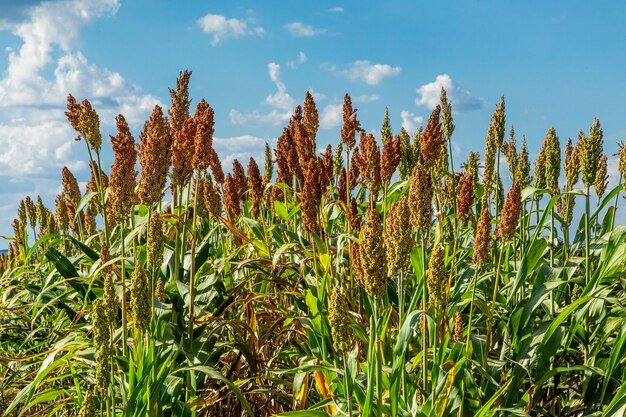Anthracnose is a fungal disease caused by Colletotrichum sublineolum, which can seriously impact sorghum crops, reducing yields and grain quality. Recognizing the early signs of anthracnose in sorghum is crucial for timely intervention and effective disease management. Here are 10 early signs to watch for in your sorghum plants:
1. Small, Water-Soaked Lesions on Leaves
The first noticeable sign of anthracnose is the appearance of small, circular water-soaked lesions on the leaves. These spots often begin as tiny, dark-colored areas, eventually expanding over time.
2. Red to Reddish-Brown Leaf Spots
As the lesions mature, they turn from a dark hue to a distinct red or reddish-brown color. These leaf spots are a characteristic indicator of anthracnose infection and may spread to cover larger areas of the leaf surface.
3. Yellowing Around Lesions
A yellow halo or discoloration often develops around the leaf spots. This chlorosis is caused by the plant’s response to the fungal infection, which disrupts the leaf’s ability to photosynthesize properly.
4. Premature Leaf Shedding
Affected leaves may dry out prematurely and fall off the plant, especially if the infection progresses rapidly. This loss of leaves limits the plant’s photosynthetic capacity, which can hinder its growth and grain production.
5. Stem Lesions
Anthracnose can spread beyond the leaves to the stem. Early signs include small, sunken, water-soaked lesions that eventually turn dark brown or black. These lesions weaken the stem, potentially causing lodging (when plants fall over due to weak stems).
6. Necrotic Patches
In some cases, necrotic (dead) patches may develop on infected leaves. These patches are brown to black and can cover significant portions of the leaf, ultimately leading to further leaf death and plant stress.
7. Fungal Fruiting Bodies (Acervuli)
As the disease progresses, tiny black fungal fruiting bodies, called acervuli, may appear within the lesions on the leaves and stems. These fruiting bodies release spores, which can spread the disease to other parts of the plant or nearby sorghum plants.
8. Weak Growth and Stunted Plants
Sorghum plants affected by anthracnose may exhibit stunted growth due to the reduced ability to photosynthesize. Infected plants may appear shorter and weaker compared to healthy plants in the field.
9. Infection on the Grain Head (Panicle)
In advanced stages, anthracnose can affect the grain head or panicle. Black or brown lesions may form on the panicle, and infected grain heads may fail to develop fully, leading to poor grain quality and yield loss.
10. Reduced Grain Size and Poor Yield
Even before the disease becomes widespread, early infections can lead to smaller grain size. The cumulative effects of leaf loss, reduced photosynthesis, and damaged panicles will result in lower yield and poor-quality sorghum grains.
Identifying anthracnose in sorghum early is key to managing the disease and preventing it from spreading throughout your crop. If you notice any of these early signs, it’s important to take action promptly. Effective control methods include planting resistant varieties, using fungicides, and practicing crop rotation to minimize the impact of this devastating disease. Early intervention can save your sorghum harvest and reduce long-term damage to your fields.
Join 'Farmers Mag' WhatsApp Channel
Get the latest Farming news and tips delivered straight to your WhatsApp
CLICK HERE TO JOIN






